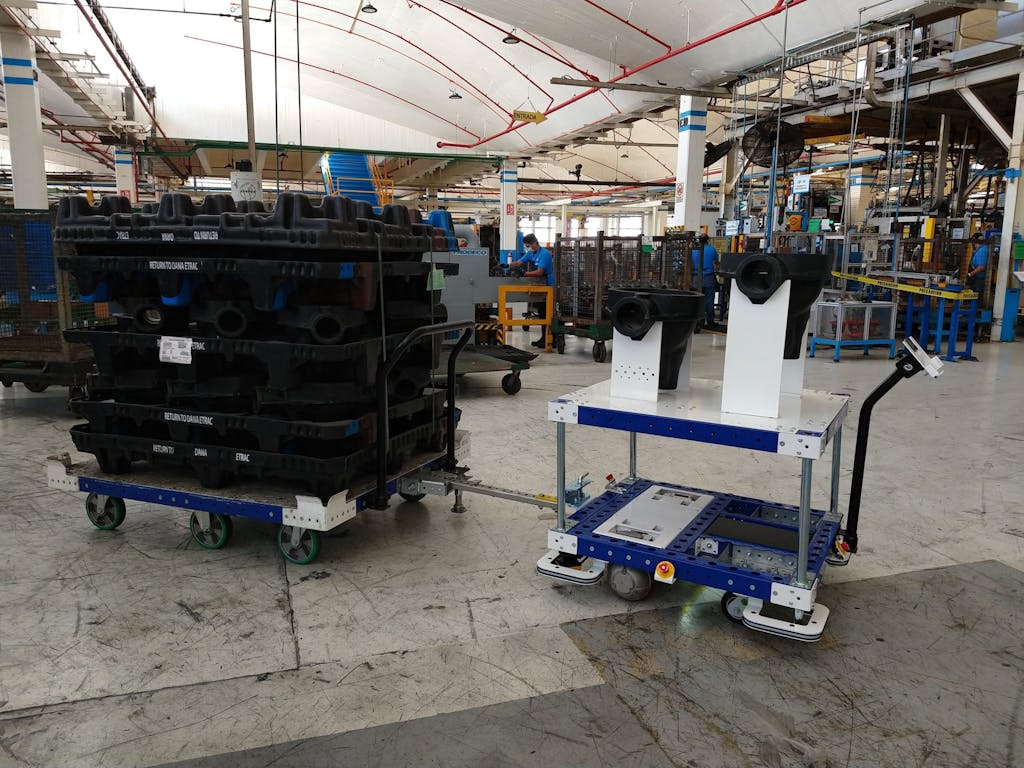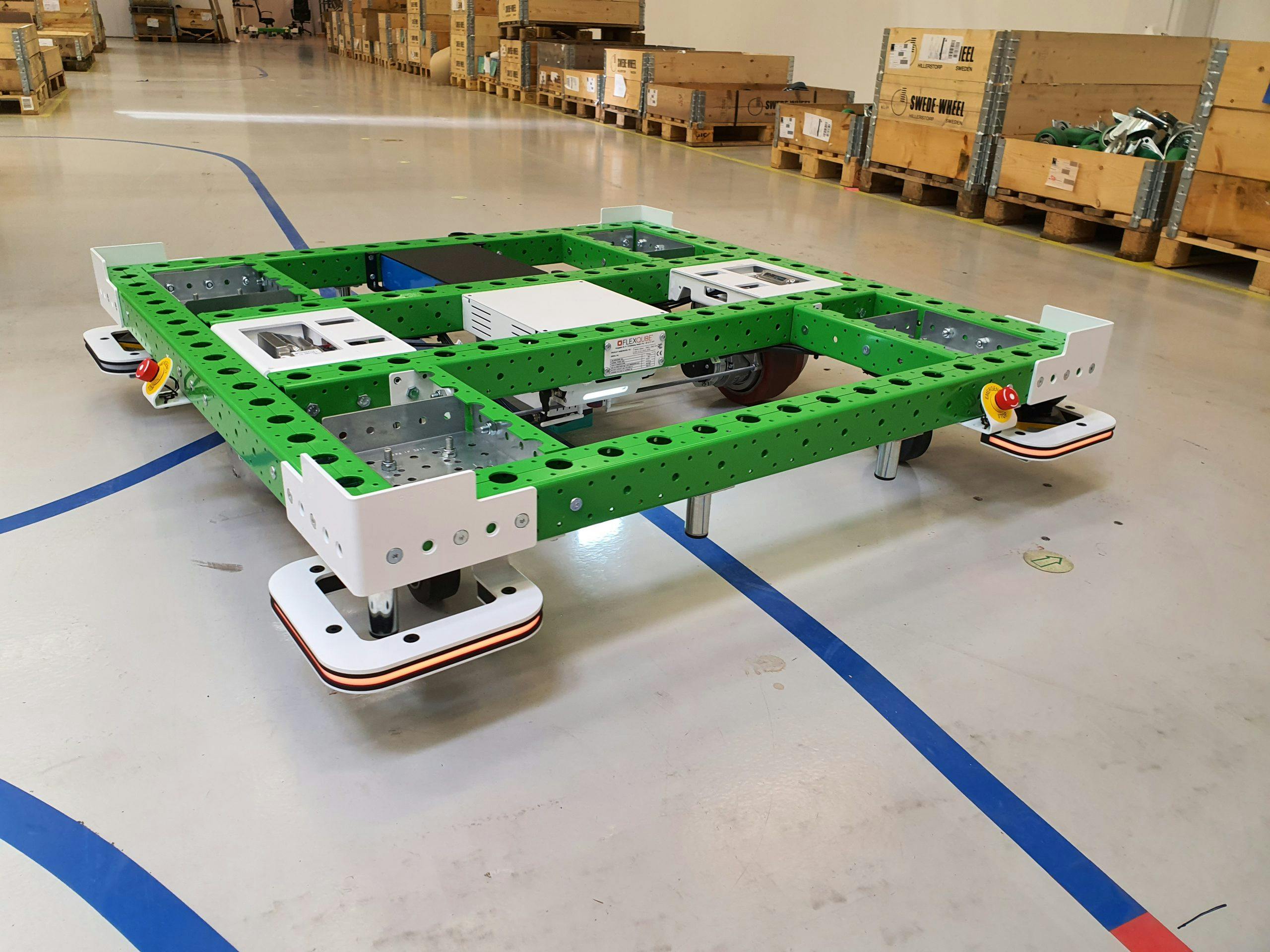Optimizing Digital Transformation Plans with AGV Robots

As the digital transformation of the industrial sector gathers pace, decision-makers have begun to appreciate the benefits it offers.
Access to operational data ensures a data-driven approach to optimizing facility performances. Today, the digital transformation of the industrial sector is expected to increase global productivity by approximately 6%, and digitizing conventional material handling systems have important roles to play.
Digital transformation solutions refer to both the hardware and software tools that support digitization. In most cases, both solutions work hand-in-hand to optimize specific processes. While the scheduling software develops an optimized layout for transporting materials across the shop floor, the AGV robot handles the physical material handling process via the designed pathway. This symbiotic relationship highlights the supporting role AGV robots play when implementing digital transformation plans. However, not
To gain a comprehensive insight into the role AGV robots play when optimizing facility performance through digitalization, understanding how digital transformation is applied is required. The four major reasons digital transformation is implemented are to accurately capture data, apply next-gen technology, improve processes, and deliver organizational change. AGVs can be integrated into these four main areas in diverse ways to optimize digital transformation plans.
Integrating AGV Robots into Digital Transformation Implementations
The accuracy of shop floor data is integral to every industry 4.0 strategy as shop floor data tells the historical story of a facility’s operation while serving as the benchmarks for predicting the future. Machine utilization data is used to craft predictive maintenance strategies and OEE; throughput data is used to determine machine utilization and productivity, which means data from AGV robots can also be leveraged to realize growth.
But how, you may ask?
The short answer is AGVs collect shop floor data as they transport materials. The longer answer involves the different types of data an AGV robot can capture and how the data can be integrated into digital transformation strategies. AGVs can be equipped with monitoring devices such as cameras or sensors which effectively turn the robot into an IIoT device. An AGV’s access to every aspect of the shop floor means it captures the data required for implementing remote monitoring initiatives which is an industry 4.0 business concept.
AGVs that process data without relying on centralized data storage platforms or external computing resources also serve as edge devices. The AGV can collect and aggregate data, transfer aggregated reports to the cloud, as well as, receive reports from industrial cloud platforms. For example, an AGV fitted with camera sensors captures layout data and transfers it to a simulation modeling platform to create accurate representations of the shop floor. The simulation modeling software, which is also a digital transformation tool, is then used to develop accurate 3D layout representations to evaluate diverse operational scenarios.
The example of utilizing data captured by AGVs to develop simulation models is an example of optimizing digital transformation plans with deployed robots. The digital twin, a virtual representation of physical processes that supports inter-exchange of data, can also leverage the data an AGV captures to improve operational processes and to support remote monitoring plans. AGVs can capture shop floor data and send the collated data sets to a digital twin in real-time. The digital twin then serves as a digital transformation tool for executing risk-based scheduling tasks to improve productivity.

Complications & Risks
Being able to continuously gather data and push the boundaries of efficiency within your facility is an ideal that many facilities strive for. However, these don’t come without complications or hindrances for you and your manufacturing facility. Creating a system that is fully connected adds many layers of complexity and with complexity comes cost.
As more and more of your machines and robots are connected to each other, the risk of an issue increases. These will not be simple issues to be solved but rather complex issues that will need experience and expensive technicians to come in and solve. In a case like this having one system out of action for a full day of production is an expensive risk to take for many manufacturers. This is why taking smaller steps in automation and beginning to test and learn about what works and what doesn’t is extremely important for manufacturers. We live and breathe this idea by introducing a simple and first-step automation tool in our eQart. The eQart is focused on value and moving materials in an automated fashion that lowers the risk to you and your processes. Beginning in small batches of automation reduces complexity, cost, and risk to your manufacturing facility throughout every step.
Intelligent AGV Robots and Industrial Automation
Complete industrial automation is the goal of industry 4.0 and digitally transforming traditional operational processes is integral to achieving full automation. Today’s AGVs are being equipped with intelligence features such as LiDAR technology, fused with sensors, and machine vision enables their application in an unstructured environment.
An intelligent AGV is capable of navigating through unstructured spaces without the need for magnetic tracks or laser guiding systems. The smart AGV will recognize its environment, navigate difficult terrain and communicate with existing smart systems, thus delivering a completely automated material handling experience. Advancements in machine vision will make the intelligent AGV an edge device with the capacity to process data at the edge and take autonomous decisions.
The Benefits of Optimizing With a Simple AGV Installation
While implementing intelligent AGVs and AMRs can lead to great benefits in productivity and efficiency. They come with a great cost in both time and money and therefore looking at a simple implementation means less overall costs. This can also allow the solution to be up and running faster which means you will experience the benefits of automation sooner.
It is key to determine precisely where the value in automation is within your processes. Instead of outlining the whole process to be automated begin with certain low-value-adding processes, such as simple material transports. By beginning with these processes you are able to test while adding automation to these smaller processes. You are able to evaluate with every stage of the process you add automation, learning what works and what doesn’t. Not only does this allow you to integrate automation immediately within your facility, but it also reduces the overall complexity which is also a huge benefit in case something goes wrong.
The eQart was designed to be this first step into automation that allows you and your team to automate smaller, simpler processes each step of the way.
Conclusion
The benefits and ease of use AGVs offer are the major reason why the manufacturing industry is expected to invest approximately $22 billion in commercial robots. AGVs provide and capture the data required to support digital transformation strategies using cutting-edge technology. You can take advantage of the option to customize AGVs to meet your facility’s digital transformation plans by contacting a FlexQube material handling expert today.


